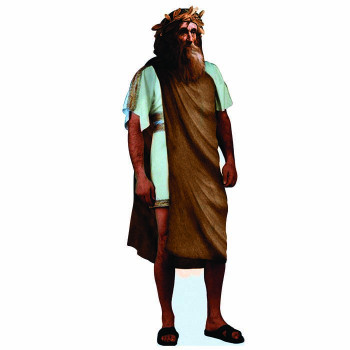CLAUDE DEBUSSY CARDBOARD CUTOUT
-
$0.00
Available Options
Buy Instantly With
Introduction to Claude Debussy
Celebrate the legacy of one of the most influential composers of the Impressionist era with our lifesize cardboard cutout of Claude Debussy. Perfect for musical displays, educational events, or as an inspiring addition to your home or office, this cutout captures the ethereal and innovative presence of Claude Debussy, reflecting his profound impact on classical music.
Background of Claude Debussy
Claude Debussy was born on August 22, 1862, in Saint-Germain-en-Laye, France. He showed early musical talent and entered the Paris Conservatoire at the age of ten, where he studied piano, composition, and music theory. Debussy's education at the Conservatoire exposed him to a wide range of musical influences, from the classical traditions of Bach and Mozart to the contemporary works of Wagner and the Russian composers.
Debussy's early career was marked by a series of significant compositions that began to establish his unique musical voice. His "Prélude à l'après-midi d'un faune" (1894), inspired by a poem by Stéphane Mallarmé, is considered a landmark in modern music. The piece's innovative use of harmony, orchestration, and form broke away from the conventions of the Romantic era, paving the way for new approaches to composition.
In 1902, Debussy's opera "Pelléas et Mélisande" premiered in Paris. The opera's subtle orchestration, use of leitmotifs, and symbolic narrative were groundbreaking, further solidifying Debussy's reputation as a leading composer of his time. His piano works, including "Clair de Lune" from the "Suite bergamasque" (1905) and the two books of "Préludes" (1910 and 1913), are celebrated for their poetic expressiveness and technical innovation.
Debussy's music often drew inspiration from nature, literature, and visual art. His "La Mer" (1905), a symphonic sketch depicting the sea, showcases his ability to evoke vivid imagery through music. Similarly, his orchestral work "Nocturnes" (1899) and "Images" (1905-1912) reflect his fascination with light, color, and atmosphere.
Despite his success, Debussy's life was marked by personal struggles, including financial difficulties and health problems. He continued to compose until his death on March 25, 1918, in Paris. Debussy's music, characterized by its harmonic innovation, textural richness, and evocative imagery, has left a lasting legacy in the world of classical music.
Cultural Impact of Claude Debussy
Claude Debussy's impact on classical music is profound and far-reaching. As one of the pioneers of the Impressionist movement in music, Debussy's works challenged traditional notions of harmony, form, and orchestration, opening new pathways for musical expression.
Debussy's use of non-traditional scales, such as the whole-tone scale and pentatonic scale, and his innovative harmonic language created new sound worlds that influenced countless composers. His emphasis on color, texture, and atmosphere in music paralleled the visual arts movement of Impressionism, drawing comparisons to painters like Claude Monet and Pierre-Auguste Renoir.
"Prélude à l'après-midi d'un faune" is often cited as a turning point in the history of Western music. Its fluid structure, lush harmonies, and evocative orchestration represent a departure from the strict formalism of earlier music, making it a seminal work in the development of modern music.
Debussy's piano works, including "Clair de Lune" and the "Préludes," are beloved for their lyrical beauty and technical innovation. These pieces continue to be staples of the piano repertoire, admired for their delicate nuances and expressive depth.
In addition to his compositional achievements, Debussy's influence extends to various artistic domains. His music has inspired poets, painters, and writers, contributing to a broader cultural appreciation of the interconnectedness of the arts. His works are frequently performed in concert halls around the world, and his recordings remain popular among classical music enthusiasts.
Debussy's legacy is celebrated through numerous festivals, performances, and academic studies. His contributions to music are commemorated in various ways, including the preservation of his manuscripts and personal artifacts, ensuring that his innovative spirit and artistic vision continue to inspire future generations.
This cutout of Claude Debussy celebrates his remarkable contributions and enduring legacy as a master composer. It serves as a tribute to his musical brilliance, his impact on the development of modern music, and his significant role in shaping the cultural heritage of the Impressionist era.
| Size | |
| Width | 22 |
| Height | 65 Inches |
- Brand: Historical Cutouts
- Product Code:H79084
- Availability:In Stock
LEARN MORE ABOUT OUR AVAILABLE MATERIALS

LIFE SIZE HISTORICAL CUTOUTS
We have been the leading historical based cutout supplier for nearly 10 years. We have worked with many schools, museums, and colleges across the country to provide stunning graphics from hsitory. Historical Cutouts are available in 3 materials and come contour cut with an easel to be self standing. Click below to learn more about each material and our cutout process.
Learn More
LIFE SIZE HISTORICAL WALL DECALS
All of our historical figures are available as a life size wall decals. Vinyl wall decal orders come ready to apply with squeegie and instructions. Having trouble? Check out our how to youtube video. Our graphics are printed on tear resistant PhotoTex Vinyl using our high definition 4 color plus white printing process.
Learn More
HISTORICAL ACRYLIC CUTOUTS
Desktop Legends are a smaller version of our life size cutotus printed on 3/16th" acrylic. All of our historical cutouts are also available as a desktop legend. These acrylic statuettes come in two sizes, 8" and 12". If you would like to learn more please click below.
Learn MoreRELATED PRODUCTS
-
Lead Belly Folk Blues Musician Guitar Cardboard Cutout
Introduction to Lead BellyStep into the soulful rhythms of history with our Lead Belly Folk Blues Mu..
Rabindranath Tagore Cardboard Cutout
Introduction to Rabindranath TagoreCelebrate the legacy of one of the most influential literary figu..
Albert Camus Cardboard Cutout
Introduction to Albert CamusCelebrate the legacy of one of the most influential existentialist and a..
Homer Cardboard Cutout
Introduction to HomerCelebrate the legacy of one of the greatest poets of ancient Greece with our li..
Jamie Dornan Red Carpet Cardboard Cutout
Introduction to Jamie DornanImagine having Jamie Dornan, the charismatic actor known for his roles i..
Nathaniel Hawthorne Cardboard Cutout
Introduction to Nathaniel HawthorneCelebrate the legacy of one of America's most influential writers..
Donatello 2 Cardboard Cutout
Introduction to DonatelloCelebrate the legacy of one of the Renaissance’s most influential sculptors..
Feminist Mary Wollstonecraft Cardboard Cutout
Introduction to Mary WollstonecraftCelebrate the legacy of one of the most influential figures in fe..
Vladimir Nemirovich-Danchenko Cardboard Cutout
Introduction to Vladimir Nemirovich-DanchenkoCelebrate the legacy of one of the most influential fig..
Claude Mckay Cardboard Cutout
Introduction to Claude MckayCelebrate the legacy of one of the most influential figures of the Harle..
Alexander Berkman Cardboard Cutout
Introduction to Alexander BerkmanCelebrate the legacy of one of the most influential anarchists and ..
Auguste Rodin Cardboard Cutout
Introduction to Auguste RodinCelebrate the legacy of one of the most renowned sculptors in art histo..














